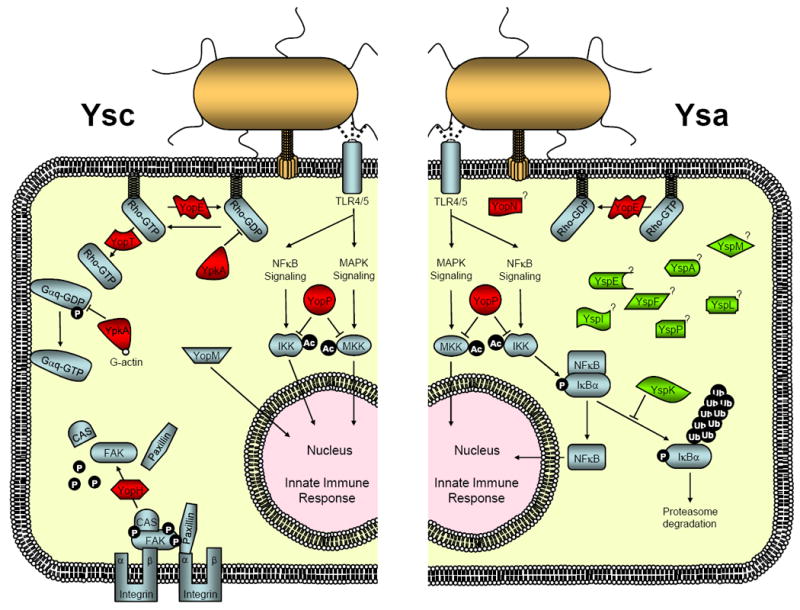Figure 1.

Cellular targets and signaling pathways targeted by Yersinia effectors translocated by the Ysc and Ysa T3SSs. Left side - Effectors delivered by the Ysc T3SS found in Y. pestis, Y. pseudotuberculosis and Y. enterocolitica. Rho family GTPases are targeted by YopE, YpkA/YopO and YopT. The N-terminal serine/threonine kinase domain of YpkA/YopO phosphorylates Gαq to prevent activation of trimeric G proteins. YopH tyrosine phosphatase interacts and dephosphorylates proteins within focal adhesion complexes to inhibit phagocytosis. YopJ/P acetylates serine and threonine residues in the kinase activation loop of MAPKs and IKKs to prevent them from activation through phosphorylation. Inhibition of MAPKs and IKKs limits expression of proinflammatory genes. YopM traffics to the nucleus where it may affect gene transcription networks. Right side - Effectors delivered by the Ysa T3SS of Y. enterocolitica Biovar 1B. Presumably, YopE and YopJ/P function as described above. YopN is injected into cells but it does not have a defined effector function. YspK interacts with E2 ubiquitin-conjugating enzymes and may interfere with proteasome-mediated degradation of IκBα, negative factor controlling the activation of NF-kB thereby inhibiting the expression of proinflammatory genes.
